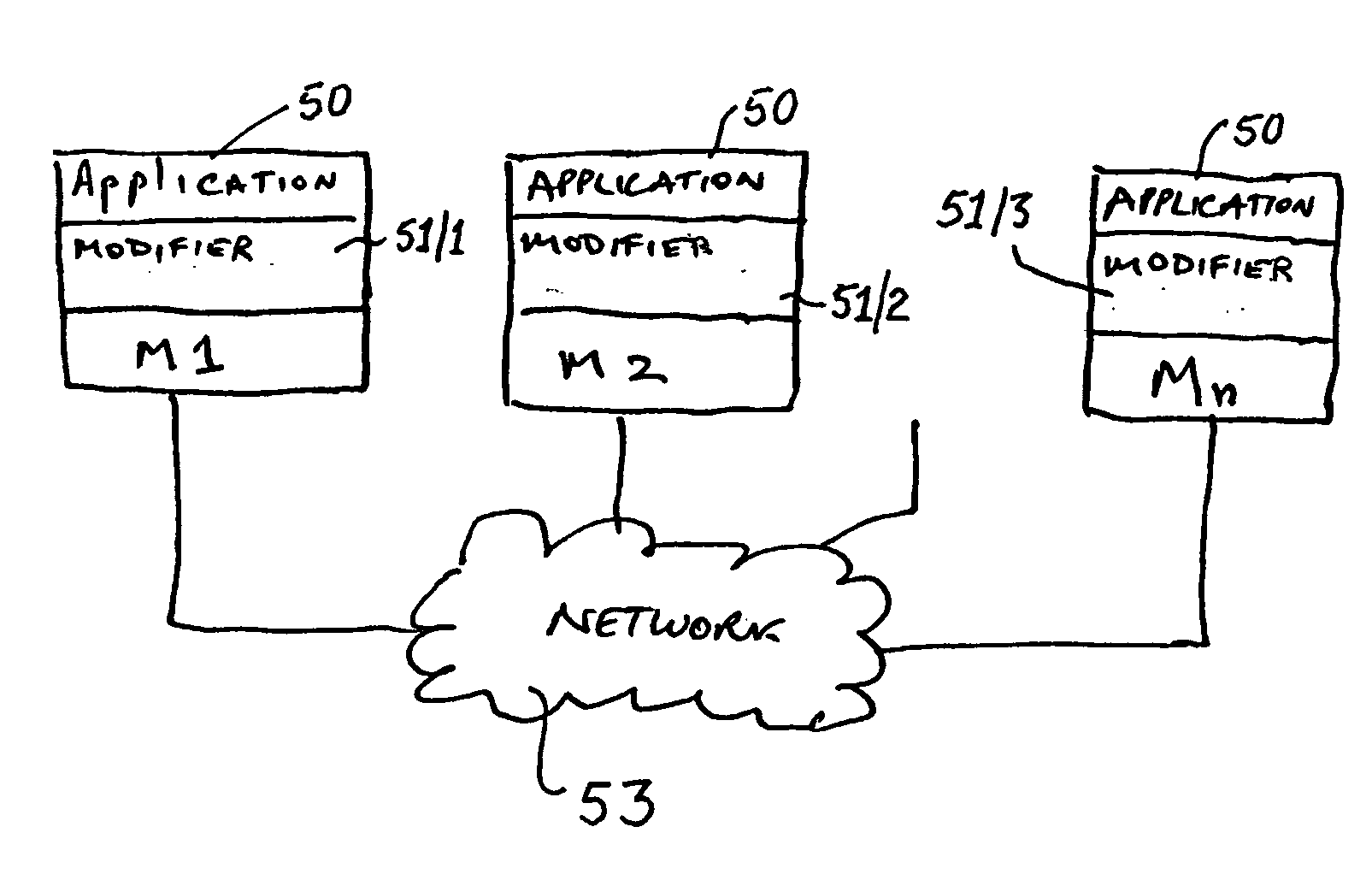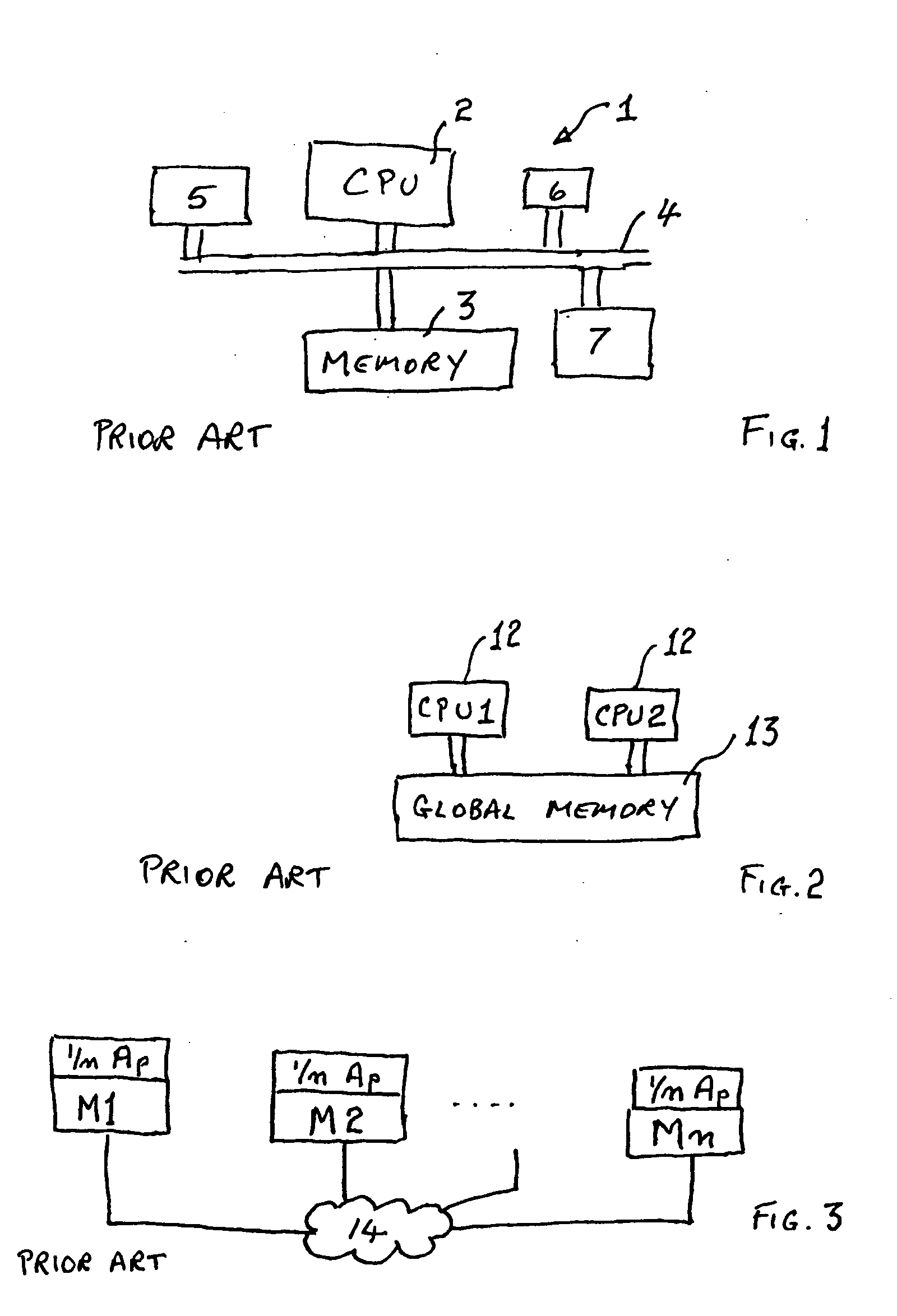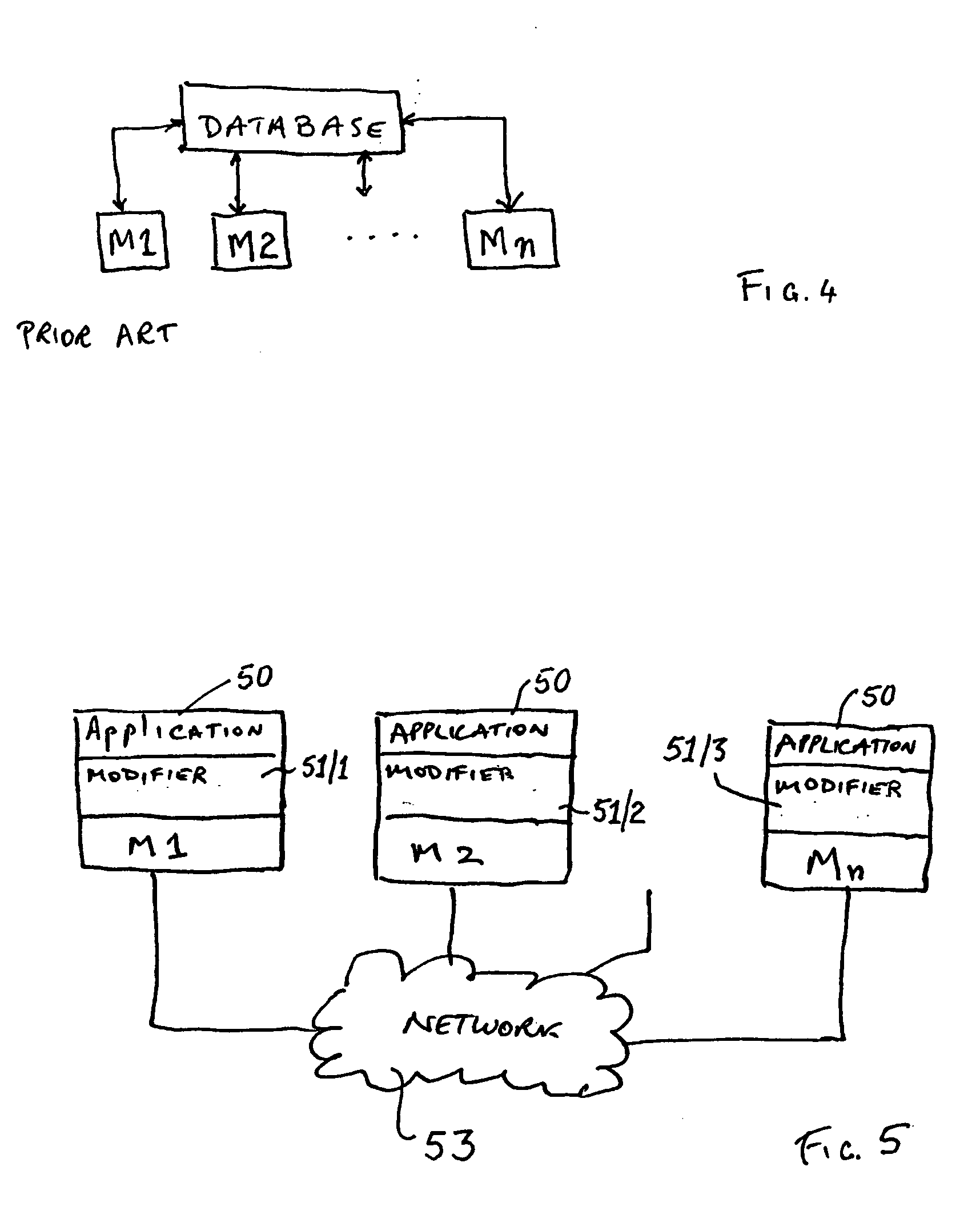Multiple computer architecture with synchronization
a multi-computer, synchronized technology, applied in the field of computers, can solve the problems of inability to scale over “commodity” (or mass produced) computers and networks, invariably increasing the administrative overhead of machines, and extremely expensive not only to manufacture but to administer single system image concepts
- Summary
- Abstract
- Description
- Claims
- Application Information
AI Technical Summary
Benefits of technology
Problems solved by technology
Method used
Image
Examples
Embodiment Construction
[0047] In connection with FIG. 5, in accordance with a preferred embodiment of the present invention a single application program 50 can be operated simultaneously on a number of machines M1, M2 . . . Mn communicating via network 53. As it will become apparent hereafter, each of the machines M1, M2 . . . Mn operates with the same application program 50 on each machine M1, M2 . . . Mn and thus all of the machines M1, M2 . . . Mn have the same application code and data 50. Similarly, each of the machines M1, M2 . . . Mn operates with the same (or substantially the same) modifier 51 on each machine M1, M2 . . . Mn and thus all of the machines M1, M2 . . . Mn have the same (or substantially the same) modifier 51 with the modifier of machine M2 being designated 51 / 2. In addition, during the loading of, or preceding the execution of, the application 50 on each machine M1, M2 . . . Mn, each application 50 has been modified by the corresponding modifier 51 according to the same rules (or su...
PUM
 Login to View More
Login to View More Abstract
Description
Claims
Application Information
 Login to View More
Login to View More - R&D
- Intellectual Property
- Life Sciences
- Materials
- Tech Scout
- Unparalleled Data Quality
- Higher Quality Content
- 60% Fewer Hallucinations
Browse by: Latest US Patents, China's latest patents, Technical Efficacy Thesaurus, Application Domain, Technology Topic, Popular Technical Reports.
© 2025 PatSnap. All rights reserved.Legal|Privacy policy|Modern Slavery Act Transparency Statement|Sitemap|About US| Contact US: help@patsnap.com



